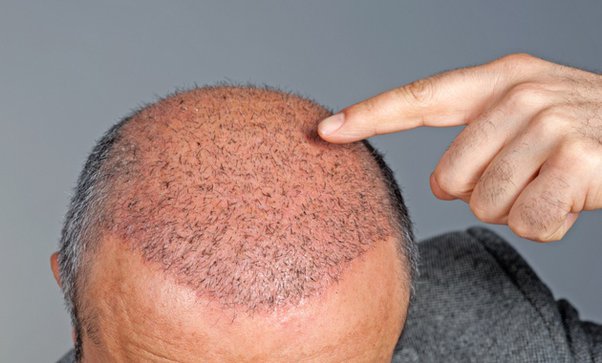Factors Influencing The Cost of Hair Transplants in India

Hair transplants are becoming way too common in India these days. Hair loss is a prevalent concern affecting individuals across various age groups, encompassing men and women. The good news is that a diverse range of cost-effective hair loss treatment solutions is available in India. These assist in concealing current hair loss and serve as preventive measures against future occurrences. For those contemplating the option of a hair transplant, delving into details about the pricing and the influencing factors behind the overall cost becomes imperative. Let us find out the Hair Transplant Cost In India As Per The Number Of Grafts and other factors.
The Basic Factors
Baldness Progression
The advancement of baldness stages significantly impacts the overall cost of hair transplants. Different stages may necessitate varying levels of intervention, affecting the complexity and resources involved in the procedure.
Choice of Transplant Method:
The selected method for hair transplant surgery is a key determinant in cost considerations. Various techniques, such as follicular unit extraction (FUE) or follicular unit transplantation (FUT), may incur different expenses due to variations in technology, equipment, and required expertise.
Quantity of Hair Grafts
The number of hair grafts essential for the transplant directly correlates with the overall cost. The more extensive the area to be covered or the higher the density desired, the greater the number of grafts needed, contributing to the final expense.
Baldness is a Big Deal
Individuals at a stage 3A level of baldness, characterized by a small patch of hair loss, may typically require between 1400 and 1800 hair grafts. The associated costs for this procedure typically range from Rs 42,000 to Rs 54,000 on average.
Conversely, those at a stage 7 level of baldness, which involves significant bald patches, may require a higher quantity of grafts, ranging from 2500 to 3200. Consequently, the costs for this advanced procedure tend to be higher, averaging between Rs 75,000 to Rs 96,000. Facilities offering hair transplant in Delhi will help you with assessing costs.
The Artas Robotic Transplant
One such method involves the utilization of a robotic arm, which meticulously extracts small sections of hair from your donor area and implants them onto areas experiencing baldness. The robotic hair transplant procedure, owing to the specialized training involved and the utilization of sophisticated equipment, tends to be comparatively more expensive than alternative methods. Typically, a Robotic Hair Transplant costs between Rs 60-100 per hair graft. Understanding the nuances of these options empowers individuals to make well-informed decisions aligned with both their preferences and budgetary considerations.
Biofibre Transplant Technique
Utilizing synthetic hair for transplantation onto a balding scalp characterizes a specific type of surgical procedure. This method, distinguished by its use of synthetic hair, typically incurs higher costs compared to alternative hair restoration procedures. The reasons for the elevated expense are multifaceted. The surgery involving synthetic hair necessitates lengthier appointments compared to other types of hair restoration procedures. The additional time invested in the process contributes to the overall increased cost.
A Bit Expensive
The increased cost of the synthetic hair transplantation procedure can be attributed to the inherent higher expense of biofibre grafts in comparison to traditional donor grafts. This heightened cost is a result of incorporating superior technology and advanced materials, contributing significantly to the overall investment in the surgery. Delving into these aspects offers valuable insights into the reasons behind the elevated pricing associated with this specific method. It underscores the intricate nature of the procedure, emphasizes the crucial role played by skilled practitioners, and underscores the premium attached to the quality of bio fibre grafts employed throughout the entire process.
FUE Hair Transplant
The expenses associated with FUE hair transplant vary, influenced by the extent of hair harvesting and transplantation required, as well as the expertise of the surgeon performing the procedure. Typically, at a hair transplant centre in India, the cost ranges between Rs 35 – 75 per hair graft. Understanding the intricacies of the FUE method, its precision, and the personalized nature of the procedure aids in comprehending the varied costs associated with this advanced hair transplant technique. Remember, the more complicated the process, the more expensive it will be.
Vertex Transplant Surgery
The cost associated with this specific surgery is intricately linked to the individual’s level of baldness and the number of grafts required to effectively cover the targeted area. The pricing structure at most clinics offering vertex transplant surgery typically falls within the range of Rs 100 – 150 per hair graft. Understanding the nuances of this specialized procedure, its targeted approach and the personalized considerations influencing costs contributes to a comprehensive awareness of the financial aspects associated with vertex transplant surgery. This meticulous technique focuses exclusively on addressing the crown area and incorporates either the Follicular Unit Transplantation (FUT) or Follicular Unit Extraction (FUE) methods.
Conclusion
In conclusion, the diverse landscape of hair transplant procedures in India encompasses various techniques, each with unique considerations and costs. From the meticulous Follicular Unit Extraction (FUE) to the specialized precision of vertex transplant surgery, individuals seeking hair restoration navigate various options tailored to their specific needs. The intricacies of these methods, such as the use of synthetic hair, bio fibre grafts, and the employment of advanced technologies, contribute to the overall expenses involved. Understanding that factors like the stage of baldness, the chosen surgical method, the number of grafts required, and the proficiency of the practitioner all play significant roles in shaping the final cost is crucial.











